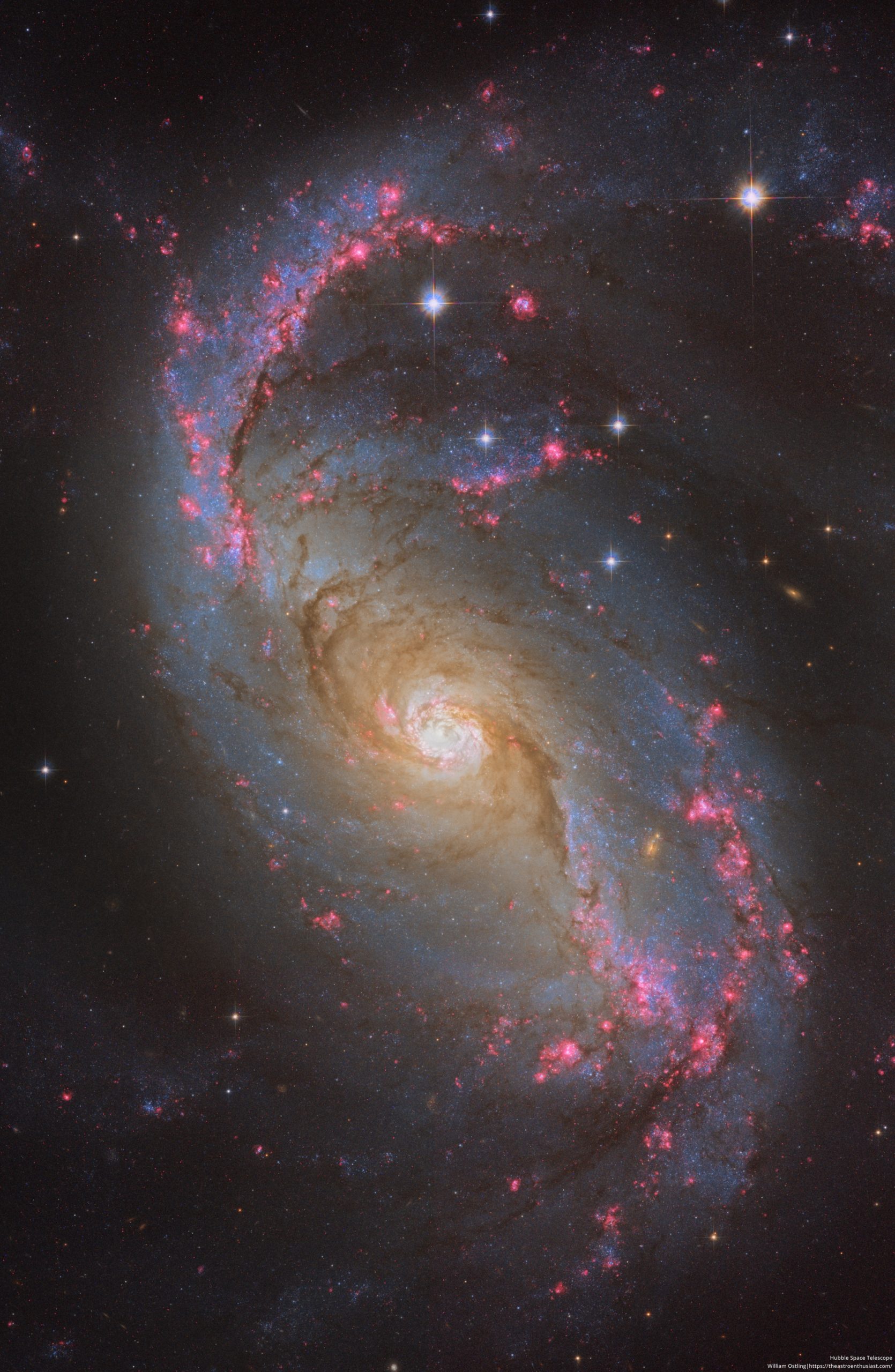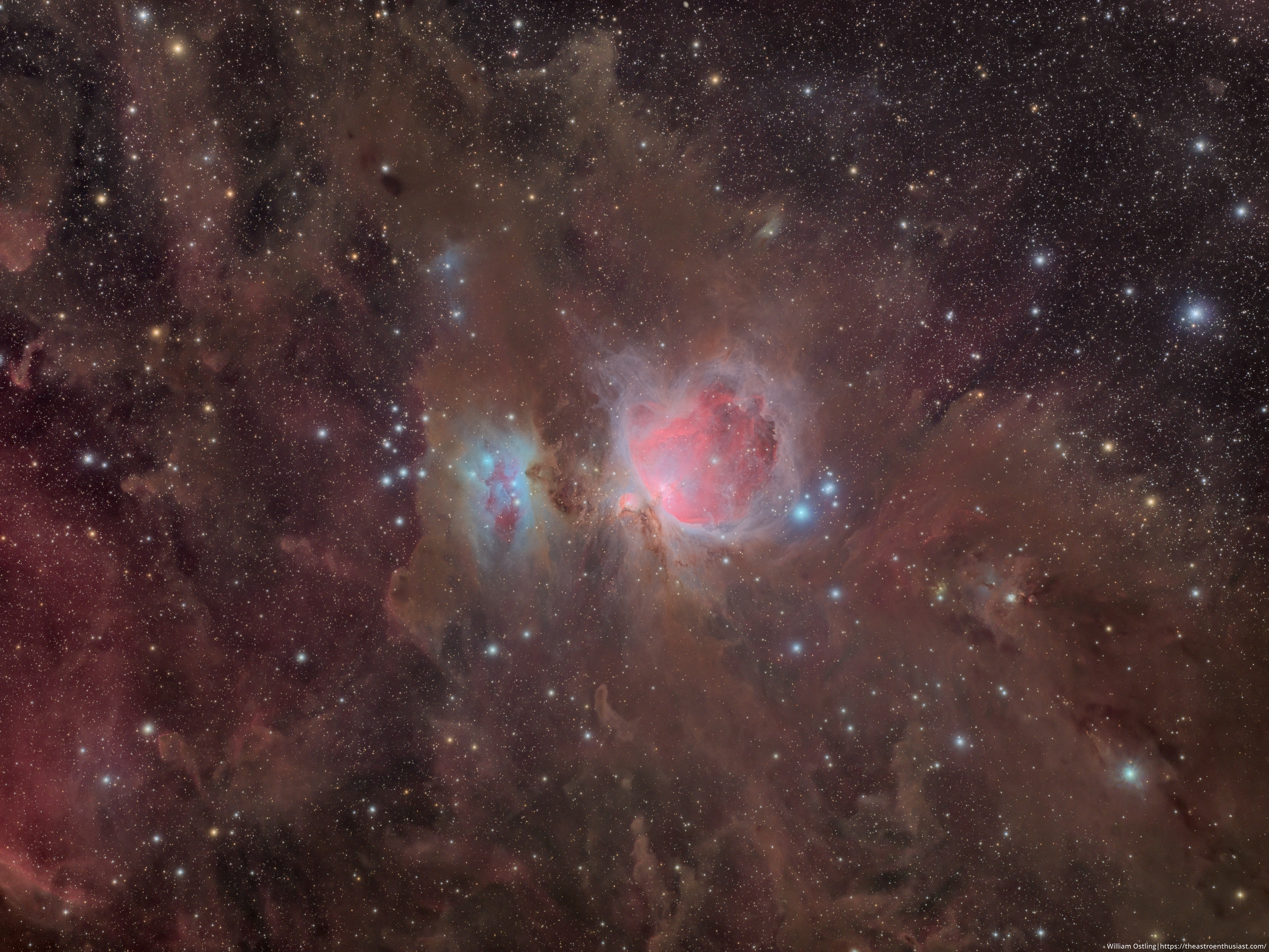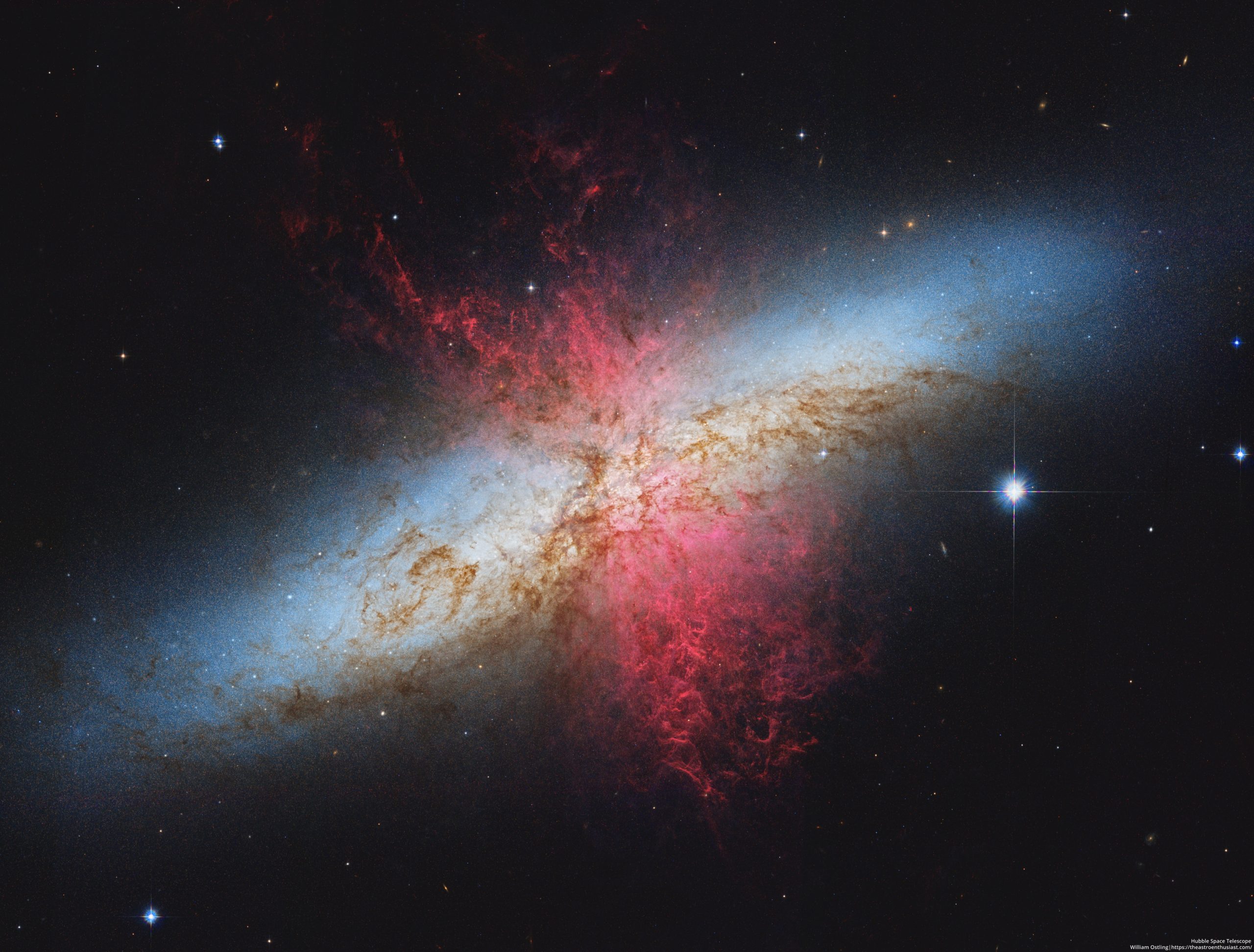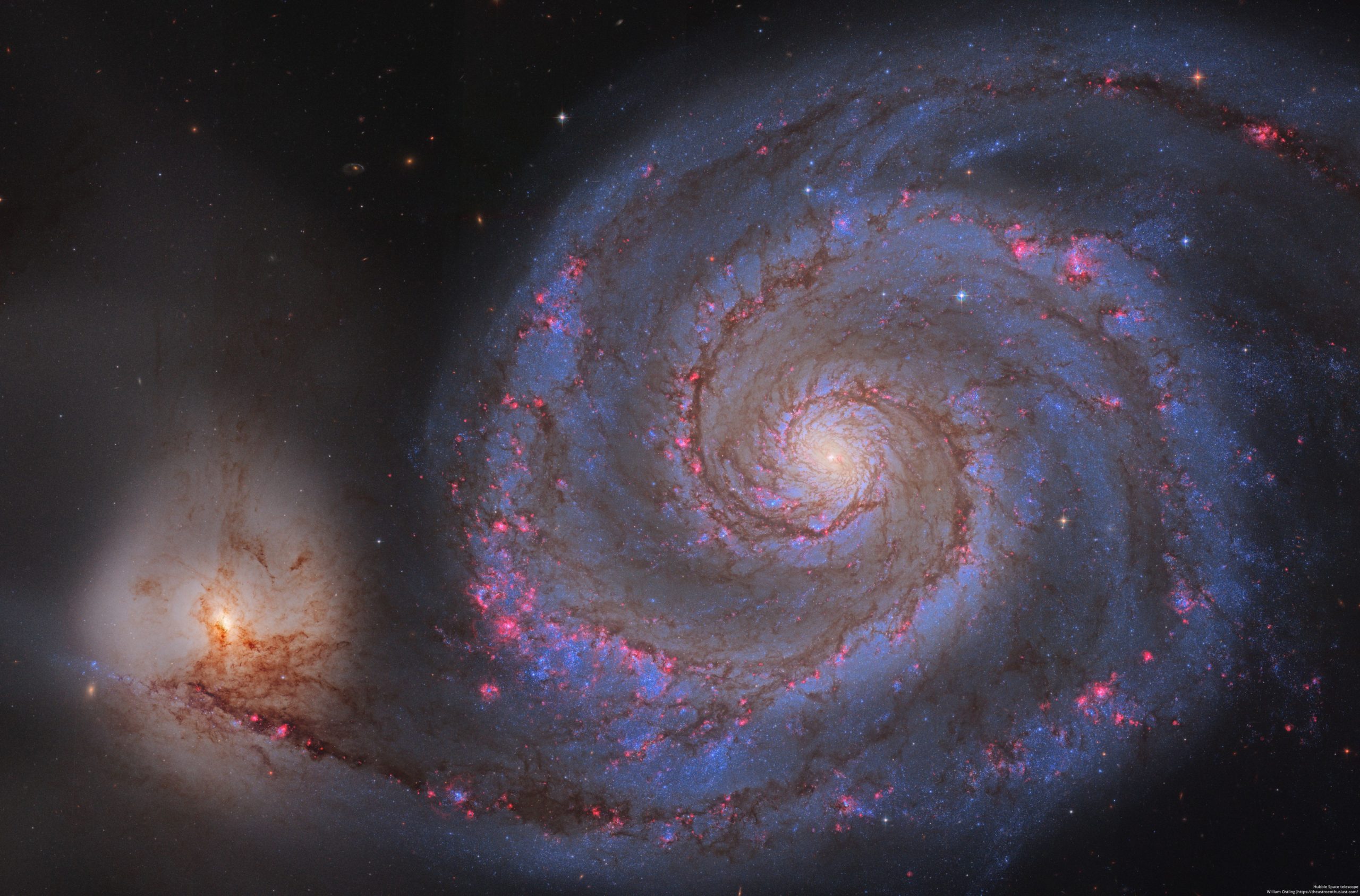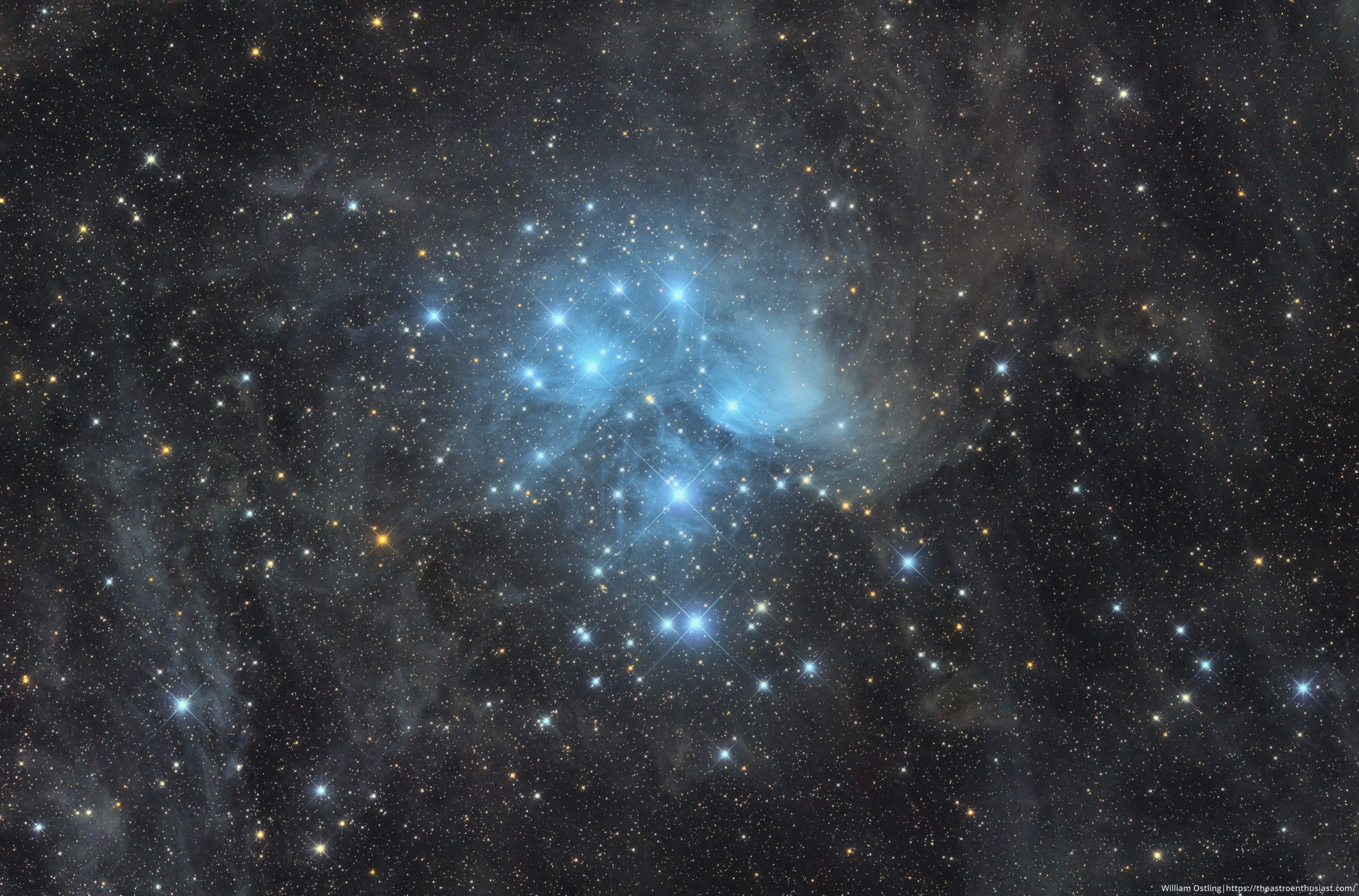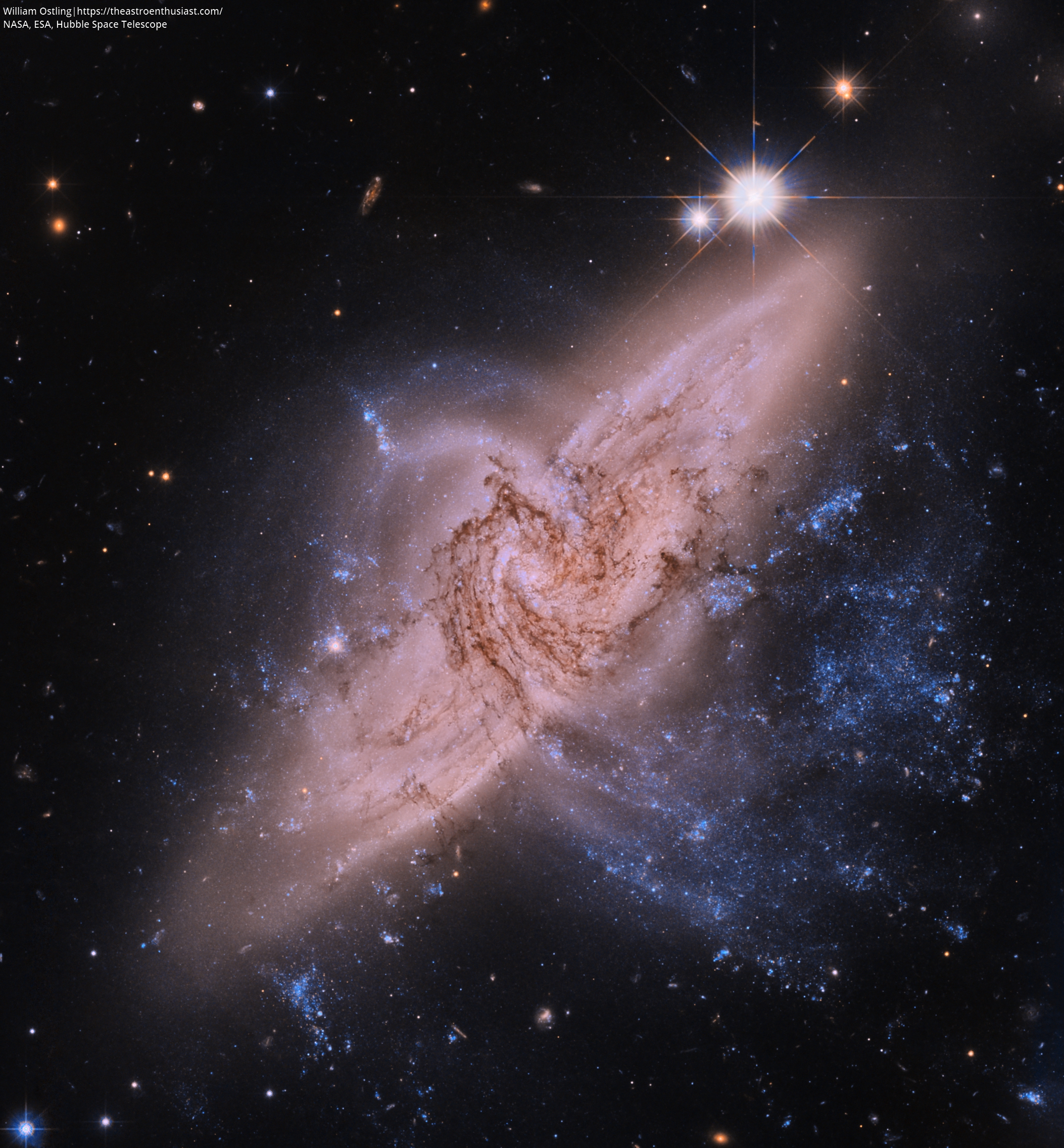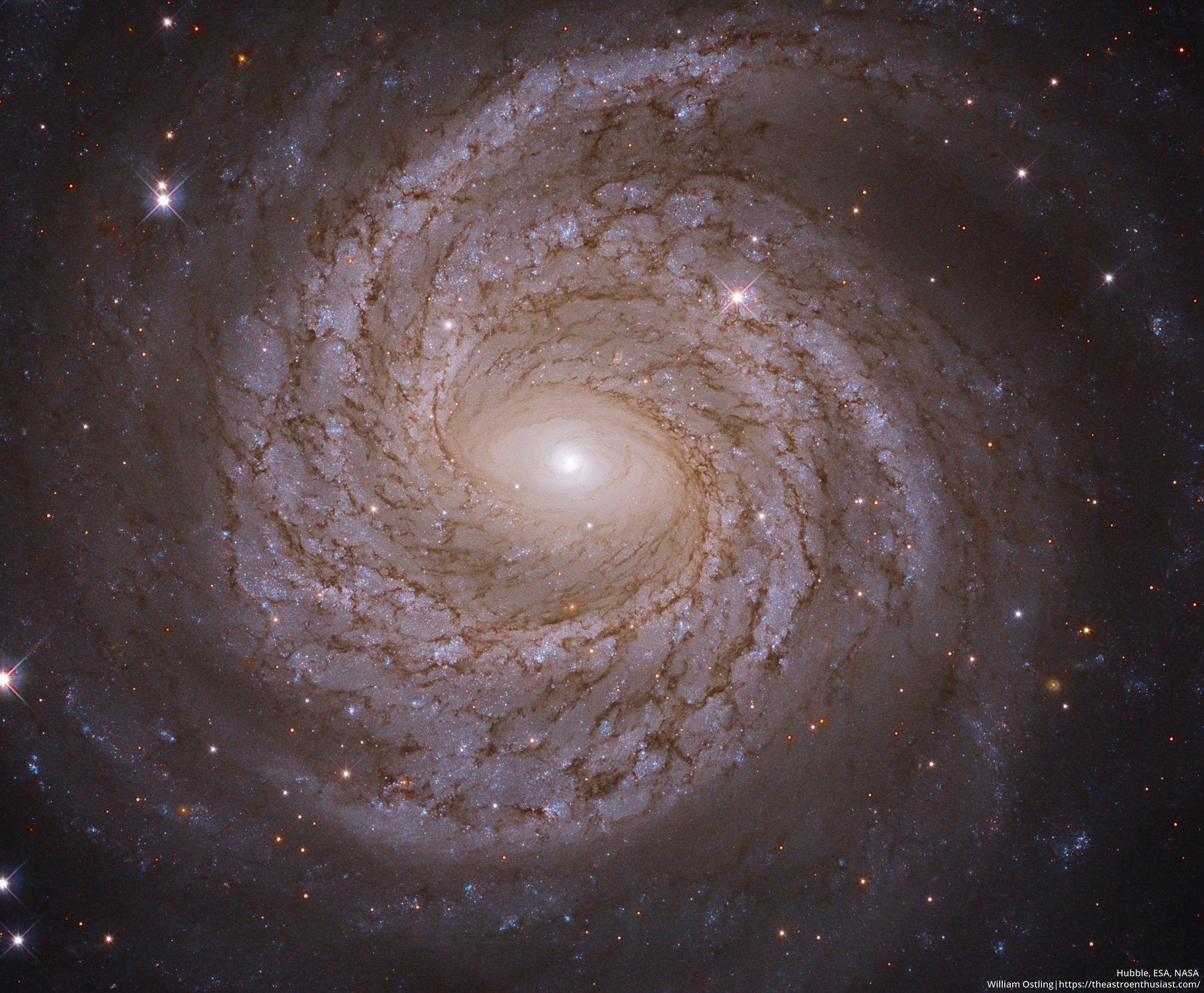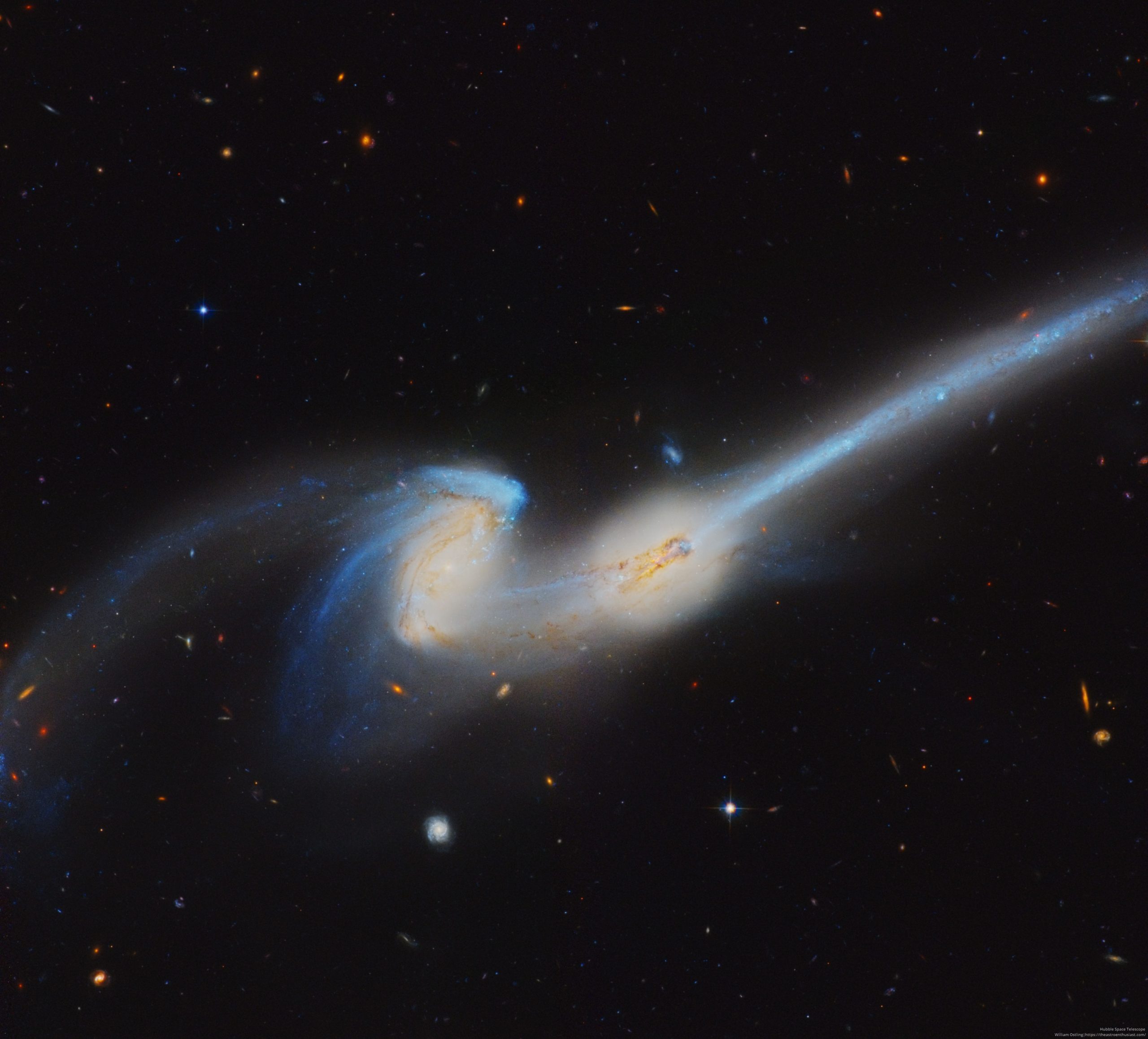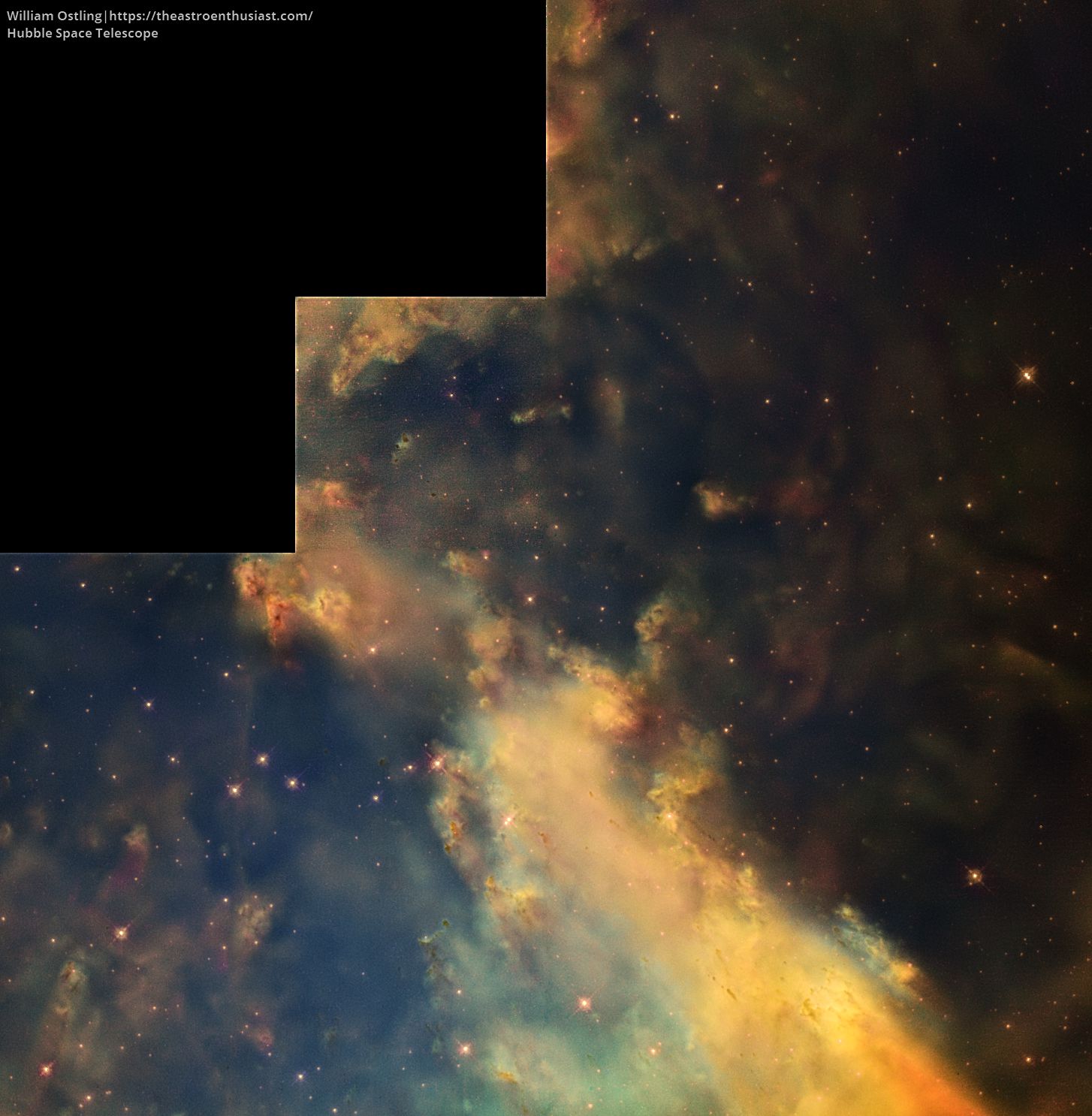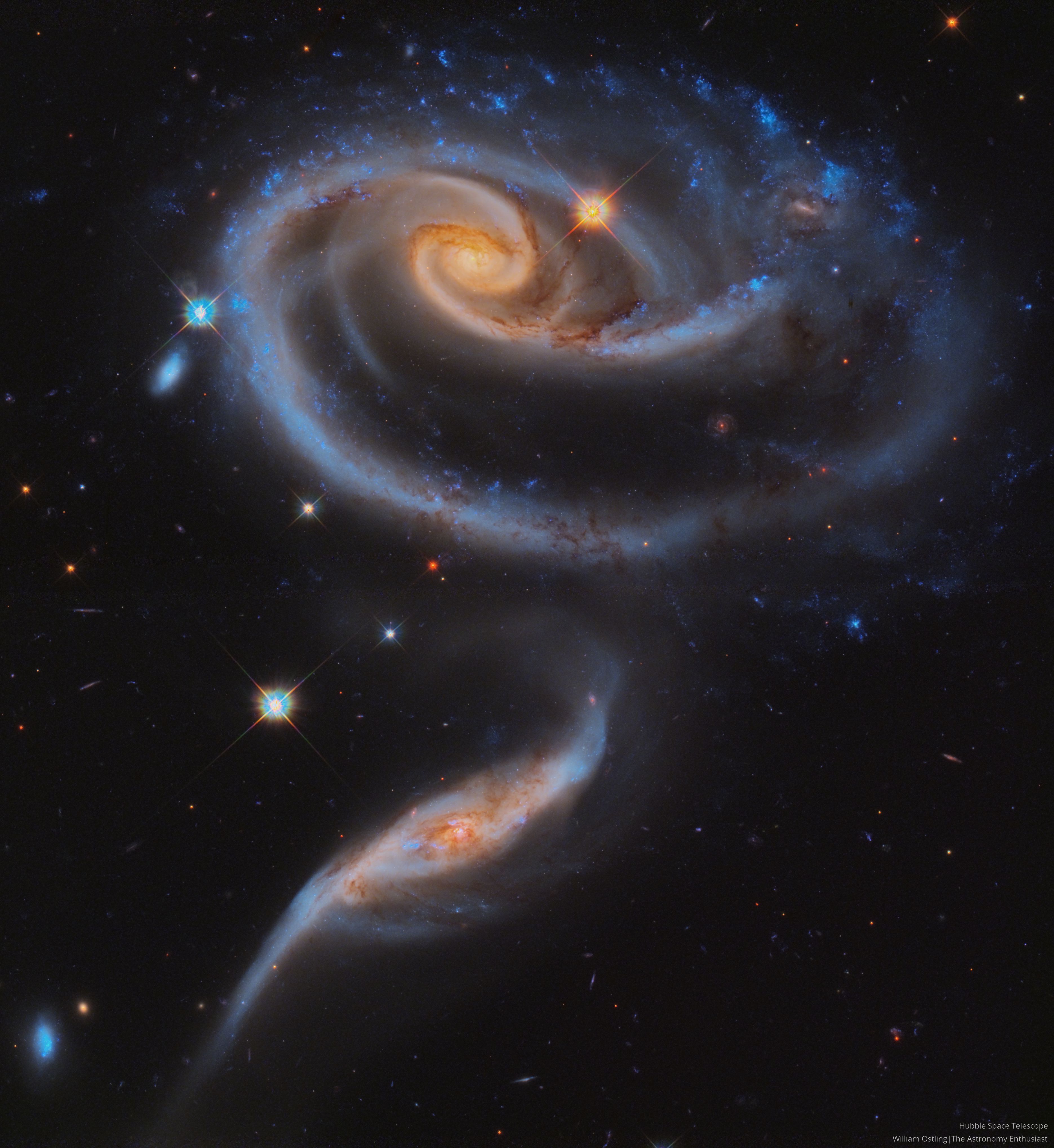NGC 1672 from Hubble
NGC 1672 is a barred spiral galaxy in the constellation Dorado. Its massive spiral arms display clusters of hot young blue stars , and beautiful clouds of pink ionized hydrogen gas. Dust lanes throughout the galaxy obscure and redden the light of the stars behind them. NGC 1672’s dynamic core is emphzised by the ring of hydrogen gas and dark dust lanes around it. Image: Details: All data was taken by Hubble’s Advanced Camera for Surveys by the following proposal: https://archive.stsci.edu/proposal_search.php?mission=hst&id=10354 Processing
Read more